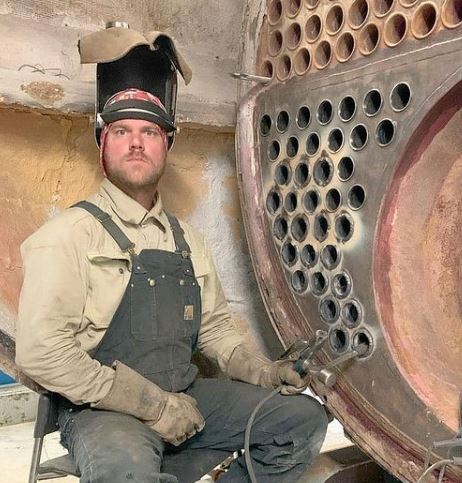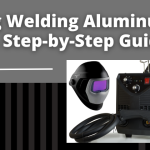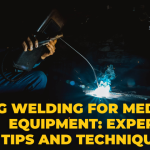Tig welding is often used for thin materials, such as aluminum, and materials sensitive to contamination. In this article, we will focus on tig welding cast aluminum, which can be a challenging task due to the inherent properties of cast aluminum.
Tig welding cast aluminum can be a challenging task due to the unique properties of this metal. Cast aluminum is known for its high thermal conductivity and low melting point, making it difficult to weld without causing warping or other defects. However, with the right set of skills and the proper equipment, it is possible to achieve strong, high-quality welds on cast aluminum using tig welding.

Tig Welding Cast Aluminum
This guide will provide tips and techniques for tig welding cast aluminum, including proper preparation of the materials, selection of filler metal and tungsten electrode, and proper torch technique. Following these guidelines, you can successfully weld cast aluminum and produce strong, reliable welds.
Preparation
Before beginning the tig welding process, it is important to properly prepare the cast aluminum surface. This includes cleaning the surface to remove any dirt, oil, or other contaminants that could affect the quality of the weld. A wire brush or grinding wheel can be used for this purpose.
Next, choose the right tig welding equipment and settings for the job. This typically includes a tig welder, tungsten electrode, and appropriate filler material. It is also important to select the right amperage and voltage settings for the thickness and type of material you are welding.
Preheating the cast aluminum can also improve the quality of the weld and reduce the risk of cracking. This can be done using a propane torch or other heating methods.
Welding Techniques
When welding cast aluminum, it is important to use the right technique to produce a strong and aesthetically pleasing weld. Two main techniques can be used: push or pull.
The push technique involves pushing the tungsten electrode and filler material into the weld puddle. In contrast, the pull technique involves pulling the tungsten electrode and filler material away from the weld puddle. Both techniques have benefits and drawbacks, and the right technique for a particular job will depend on the specific circumstances.
Maintaining proper arc length is also important when tig welding cast aluminum. The arc length is the distance between the tungsten electrode and the workpiece. If the arc length is too long, the weld may be weak and porous, while an arc length that is too short can contaminate the tungsten electrode.
Adjusting the tungsten electrode angle can also affect the quality of the weld. A tungsten electrode angled too steeply can result in a narrow and shallow weld bead, while an electrode angled too shallowly can produce a wide and shallow weld bead.
Filling Gaps and Defects
Sometimes, tig welding cast aluminum may require filler material to fill gaps or defects in the material. Filler rods or wire can be used for this purpose, and the right type of filler material will depend on the specific circumstances of the job.
It is important to properly melt and integrate the filler into the weld puddle when using filler material. This involves using the right technique and controlling the tungsten electrode and filler material to produce a smooth and consistent weld bead.
Finishing the Weld
After the weld is complete, it is important to clean the weld bead to remove any excess material or contaminants. This can be done using a wire brush or grinding wheel.
Depending on the specific circumstances of the job, post-weld heat treatment may also be necessary to improve the strength and integrity of the weld. This involves heating the weld to a specific temperature for a set amount of time and then allowing it to cool slowly.
Finally, it is important to inspect the weld for defects or imperfections. This can be done visually or using non-destructive methods such as radiography or ultrasonic testing.
Safety Considerations
Tig welding cast aluminum can be a hazardous activity, and it is important to take proper safety precautions to protect yourself and others.
One of the most important safety considerations is wearing proper personal protective equipment (PPE). This may include a welding helmet, gloves, long sleeves and pants, and protective shoes or boots.
It is also important to properly ventilate the workspace to reduce the risk of inhaling harmful fumes. This may involve using exhaust fans or opening windows to allow fresh air to circulate.
Finally, following proper safety procedures for handling welding equipment is important. This may include securing the workpiece to prevent it from moving, turning off the welding equipment when not in use, and properly storing it when it is not in use.
What’s the Best Way to Weld Cast Aluminum?
The best way to weld cast aluminum is to use a TIG (Tungsten Inert Gas) welding process. This process uses a non-consumable tungsten electrode to create an arc and a shielding gas such as argon to protect the weld from atmospheric contamination. TIG welding is relatively slow, producing high-quality welds with very little distortion to the metal. It is also ideal for welding thin materials such as cast aluminum, as it can easily be adjusted to provide the ideal heat input for the job.
How Many Amps Does It Take to TIG Weld Cast Aluminum?
The amps required to TIG weld cast aluminum depend on the thickness of the material, the type of tungsten being used, and the desired weld properties. Generally, the amps will range from 20 to 200 amps for aluminum. It is important to note that lower amperage settings are preferred for thin materials such as cast aluminum, as higher amperage settings can cause excessive distortion and heat input.
What TIG Wire to Use for Cast Aluminum?
The type of TIG wire to use for cast aluminum depends on the desired weld properties and the size and thickness of the welded material. Generally speaking, the most common type of wire used is 4043 aluminum filler, designed to provide good weld properties and corrosion resistance. Other types of aluminum filler wire, such as 5356 or 5356-A, can be used depending on the specific application.
What is Tungsten for Cast Aluminum?
The type of tungsten used for cast aluminum depends on the amperage of the welding process and the desired weld properties. Generally, 2% thoriated tungsten is recommended for aluminum welding, as it provides good arc stability and a high melting temperature. Other types of tungsten, such as created or lanthanide, can also be used depending on the specific application.
How Far Should Tungsten Stick Out for Aluminum?
The distance the tungsten should stick out for aluminum welding depends on the amperage used and the desired weld properties. Generally, the tungsten should stick out 1/8-1/4 inch for aluminum welding at lower amperages (below 120 amps). For higher amperage welding, the tungsten should be further away from the arc, usually 1/2-3/4 inches. It is important to note that the tungsten should always be kept from the arc to prevent contamination of the weld.
Conclusion
Tig welding cast aluminum can be challenging, but with the right preparation, technique, and safety considerations, it is possible to produce strong and aesthetically pleasing welds. Proper cleaning and preheating of the workpiece, careful control of the tungsten electrode and filler material, and proper post-weld heat treatment (if necessary) can all contribute to the success of the tig welding process. Following these tips and techniques, you can confidently tackle tig welding projects involving cast aluminum.

It’s been years since I got into welding as a side hustle. It’s been so long since Doing All kinds of welds for business and pleasure as this is my hobby. Being in this field I have learned from hands-on-experience also came to know what gears work and what doesn’t. The Tig Welder is my own platform where I use to share my experience.






Leave a Reply